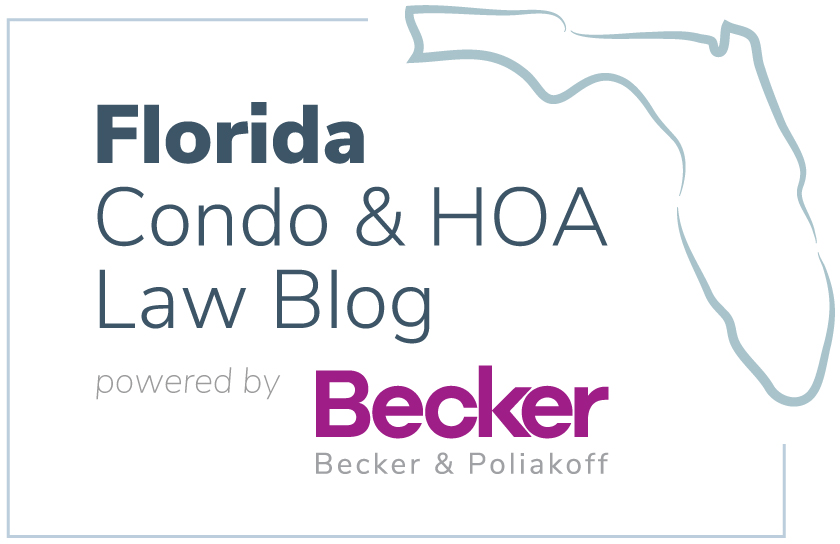
The Federal National Mortgage Association (“Fannie Mae”) and the Federal Home Loan Mortgage Corporation (“Freddie Mac”) recently issued new temporary requirements as an attempt to mitigate risk in community association loan underwriting. Many other industries within the community association world, such as insurance, have adjusted costs and guidelines in an effort to mitigate risk as well.
The new requirements have created significant murmurings, considering that as of 2020 Fannie Mae and Freddie Mac own approximately sixty-two (62%) of conforming loans in the United States. According to Dawn Bauman, CAI’s senior vice president of government and public affairs, “70% of all condo loans in the U.S. are [backed by] Fannie Mae or Freddie Mac. 60% to 70% of all condo complexes are more than 30 years old.” Both Freddie and Fannie do not lend money directly, but are guarantors of third-party loans and purchasers of loans in the secondary mortgage market. Unfortunately, the new requirements are exceedingly difficult to meet as now articulated.
Before discussing the requirements, a brief outline of Fannie Mae’s and Freddie Mac’s importance to the residential mortgage market may be helpful. Chartered by Congress, and now under the conservatorship of the Federal Housing Finance Agency (“FHFA”), Fannie Mae and Freddie Mac are government-sponsored enterprises (“GSE”), quasi-governmental entities with the purpose of enhancing the flow of credit to mortgage lenders, providing liquidity, stability and affordability to the U.S. housing market.
The primary difference between Fannie Mae and Freddie Mac, is that Fannie Mae buys mortgages from larger commercial banks, while Freddie Mac buys from smaller banks. When a potential unit owner either purchases a unit within a community association, or decides to refinance, a lender will originate and fund the loan, but typically with the intent of selling the loan to either Fannie Mae or Freddie Mac and therefore must meet their underwriting requirements in order for the loan to be deemed eligible. Many homeowners are unaware of these types of transactions on the secondary mortgage market since the bank which originated the loan remains what is deemed the “loan servicer”.
The new Fannie Mae and Freddie Mac requirements create a private database, which is only available to lenders, of community associations that are deemed ineligible. Among other things, disqualification from Fannie Mae and Freddie Mac can be due to community associations with significant maintenance or unsafe conditions, special assessments, insufficient reserve funding, or no reserve study.
Many may wonder why this a big deal, especially if they believe their association is maintained properly. While that may be the case, the new guidelines now require lenders to obtain written answers to questions concerning building safety, soundness, structural integrity, and habitability, which were never part of previous lender questionnaires. Most of these questions cannot be answered by the association since the board and its manager are simply not qualified to give such an opinion, meaning they lack the requisite legal and engineering expertise.
While many states have legislation to require scheduled structural inspections, many associations have not undertaken structural reviews of its properties, particularly on a property-wide basis. A typical reserve study does not undertake structural review or analysis. Even if it has, the questionnaire further asks the association to summarize its findings and make representations about the structure of the building, which can usually only be answered by a professional engineer or architect.
A myriad of potential legal issues could arise due to an unqualified or inaccurate representation concerning the structural integrity of the building. An inaccurate or misunderstood statement from the questionnaire could be used against the community association in a variety of ways in differing types of legal actions, such as a personal injury matters, negligence suits that could be brought against the particular association, and even suits between buyers and sellers of units.
Until these challenges are resolved, many community associations are caught in a quagmire of how to move forward with the new requirements. Refusing to answer the questionnaire may result in the denial of future loans for a community, but on the other hand, answering the questionnaire may expose the association to considerable liability. There is not a one-size fits all approach and all community associations are unique in this regard. Careful consultation with an association’s legal counsel and engineer is crucial to figure out the best manner in which to move forward with these considerations.


